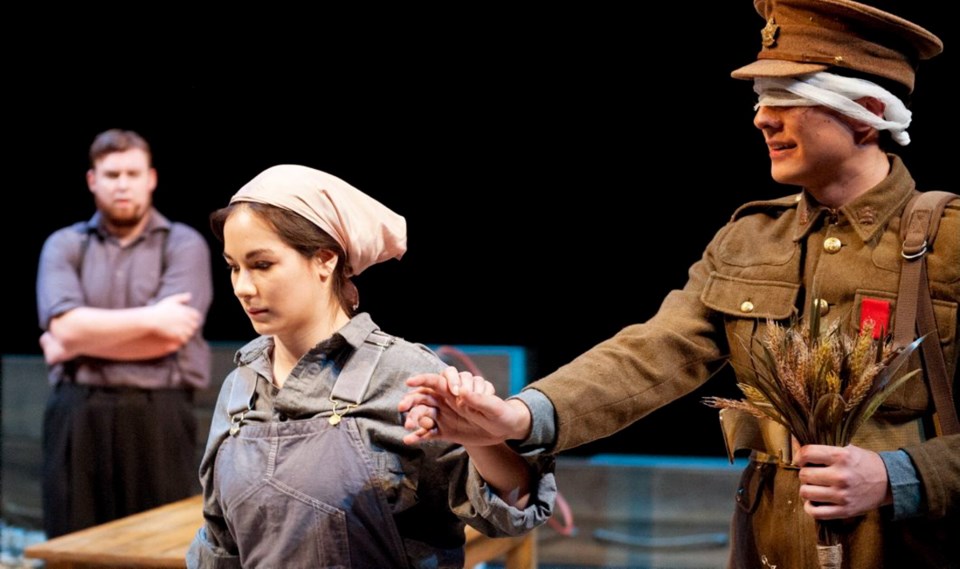Unity (1918)
When: To March 22
Where: Phoenix Theatre
Rating: Four stars (out of five)
Who knew a play about the flu could be so moving?
Unity (1918) is a minor classic of Canadian theatre. Kevin Kerr’s 2001 drama, which won a Governor General’s Award, examines the lives of three sisters against the backdrop of the First World War and the Spanish flu pandemic.
The subject matter is rough. At times it seems like everyone is dying, sci-fi movie style. As well, Kerr’s play — almost three hours with intermission — is a touch long and sometimes overly earnest (despite its welcome black humour).
Yet it’s definitely worth seeing. The University of Victoria’s student cast does a superior job with a challenging script — the sisters are particularly convincing. Kerr has directed his show with panache and grace. Mounted on the thrust stage of the Phoenix’s Chief Dan George Theatre, the production’s simple, bold design elements are first-rate. Guitar accompaniment by composer Francis Melling is wonderfully atmospheric.
More Canadians died during the month-long influenza epidemic than in four years of war, something most of us either don’t know or have forgotten.
This is one of the play’s underlying themes. In Unity (1918), one of the sisters, Beatrice, offers to read patriotic reports of Canadian bravery to a blinded soldier, Hart, who’s returned from the war. Hart refuses to listen, then tells Beatrice what life was really like on the front line. The subtext is, while there’s no stopping a plague, war is man-made and therefore all the more reprehensible.
The play is, ultimately, a metaphor for mankind’s neverending struggle for many things: survival, happiness, love, fulfilment. Kerr wants to say something profound about the human condition.
This is laudable. However, capital-letter themes always run the risk coming off as too abstract. To work, Unity (1918) must connect with the audience at a visceral level. It does. The plight of the townsfolk is portrayed with great humanity and feeling. On Thursday night, at least one audience member dabbed her eyes and half the audience gave Unity (1918) a standing ovation.
War and disease are the nightmarish monsters forever lurking in the background. The citizens of Unity, Sask., endeavour to live normal lives. However, black-edged letters bringing news of young soldiers keep arriving. Even more horrifically, influenza descends on the farm town.
Unity is torn apart. Townsfolk wear surgical masks and avoid physical contact. Yet nothing can stop the demand for coffins.
Amy Culliford played Beatrice, one of the sisters, with great heart and empathy. As sister Mary, Gillian McConnell was especially effective when delivering an elegy for her fiancé, who died in the war. As Sissy, the third sibling, Haley Garnett captured her character’s oddball pluck (Sissy is obsessed with a doomsday prophesy she believes is supported by the Bible).
There were other strong performances, including those of Logan Mitev as the sightless Hart (a curiously chipper character) and Tristan Bacon as Michael, a young farmhand whose premature death is emblematic of the town’s despair.
Kerr and set/lighting designer Allan Stichbury have conspired to make Unity (1918) a visual poem. The stars projected around the theatre parallel strings of lights that sparkle from underneath the actors’ clothes. Costumer Halley Fulford has dyed the top half of the sisters’ dresses grey, a great touch that suggests these young women are dipped in sorrow.



